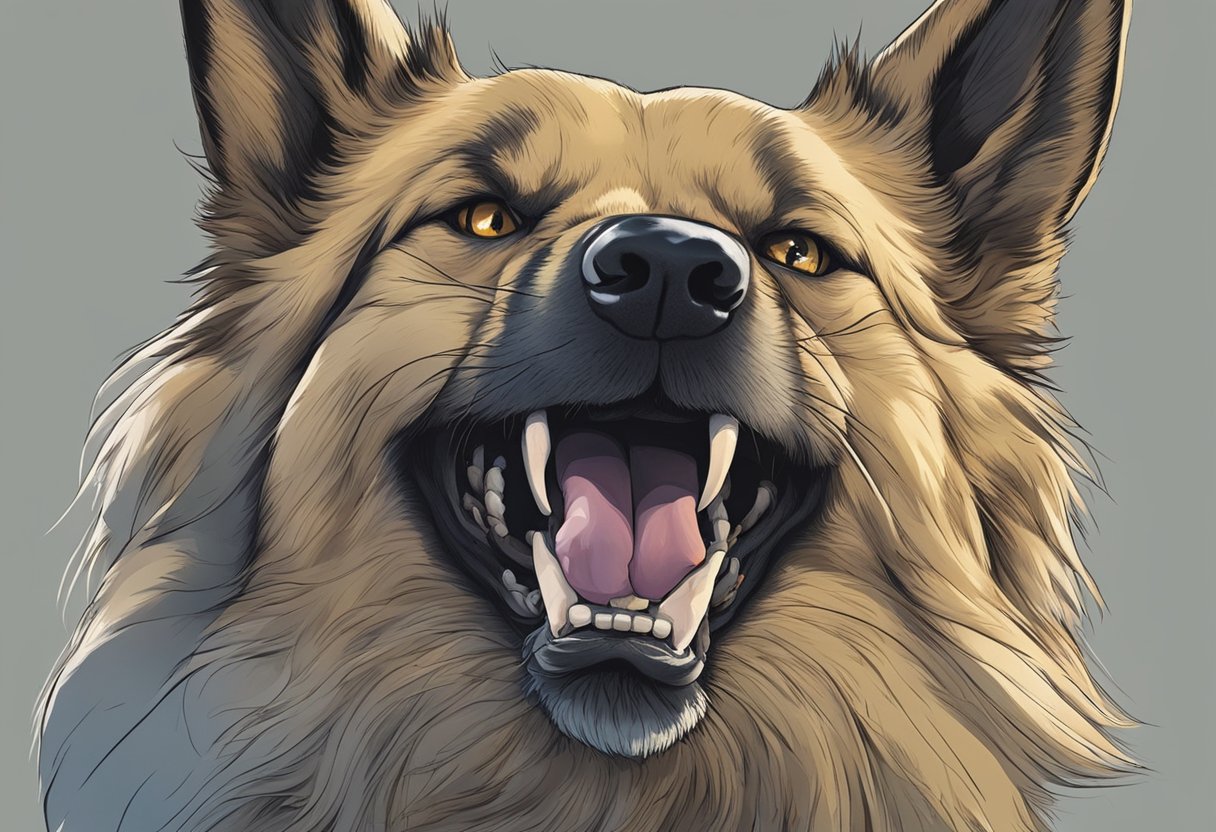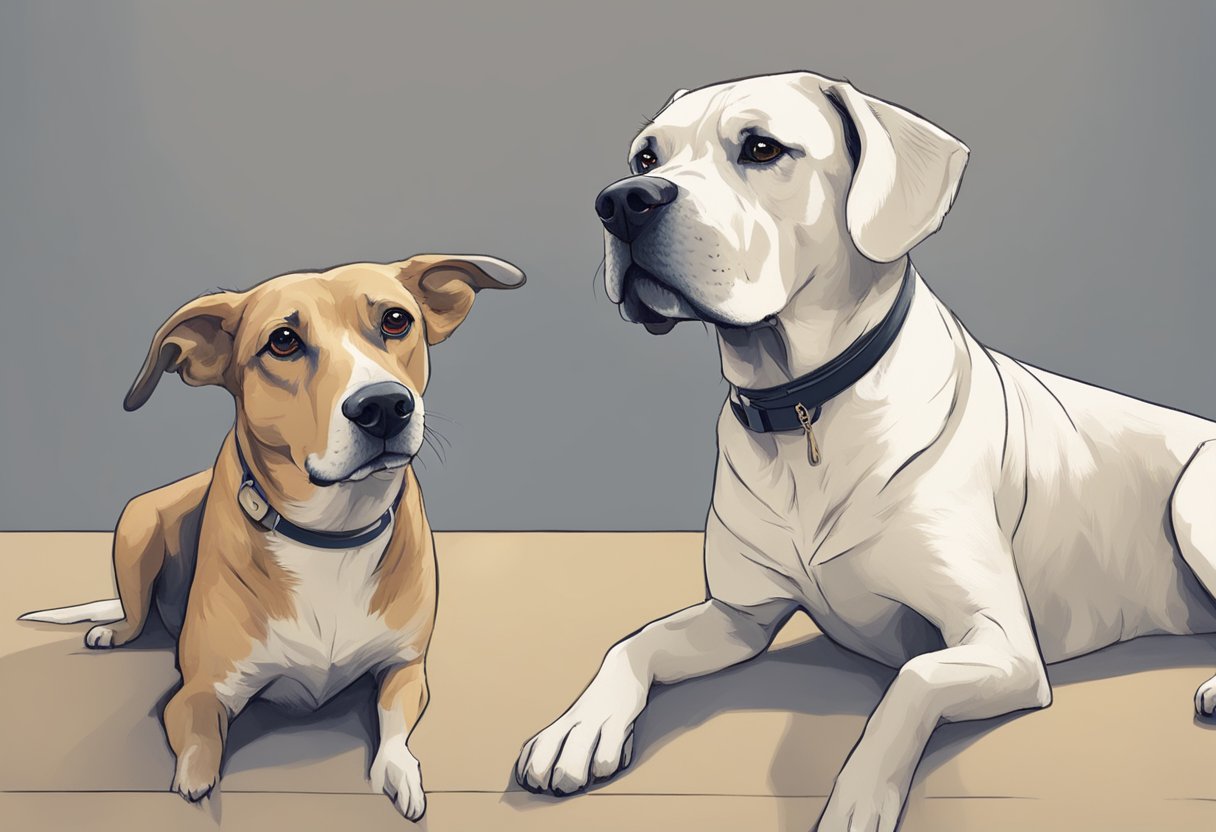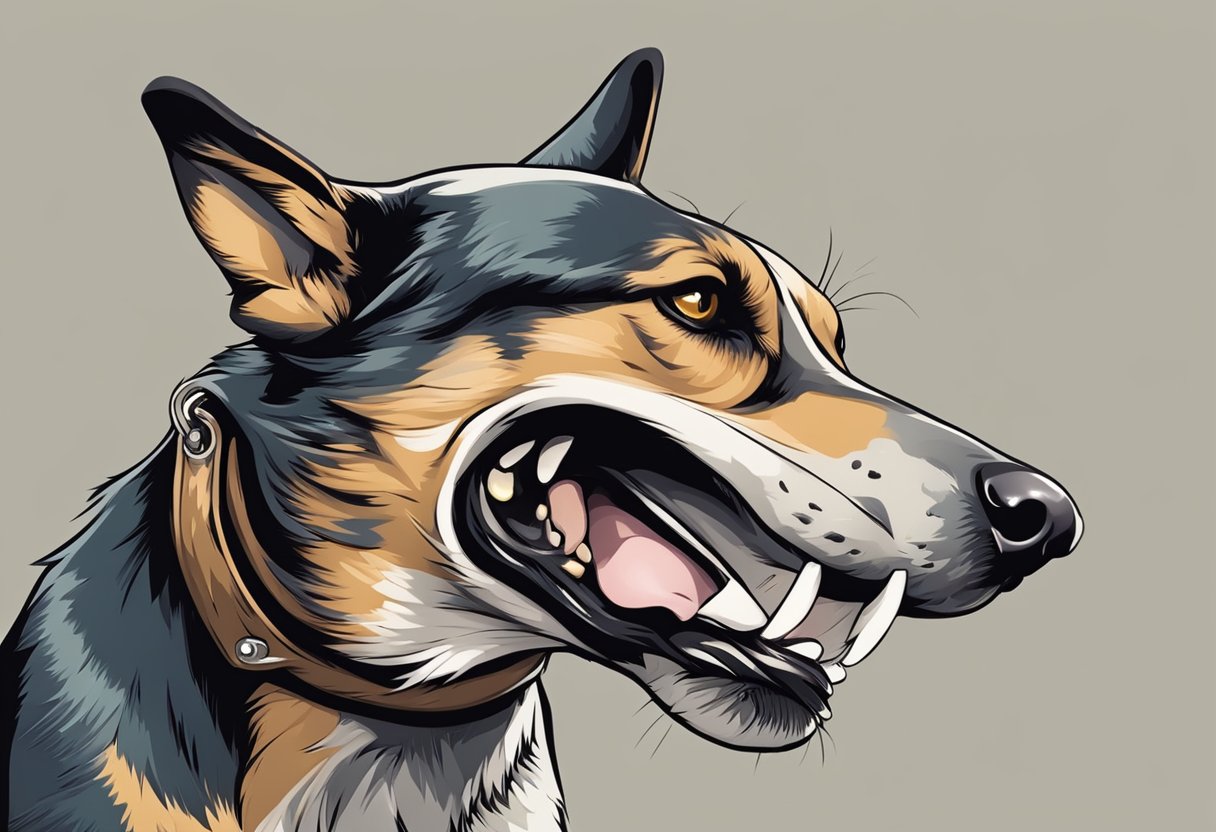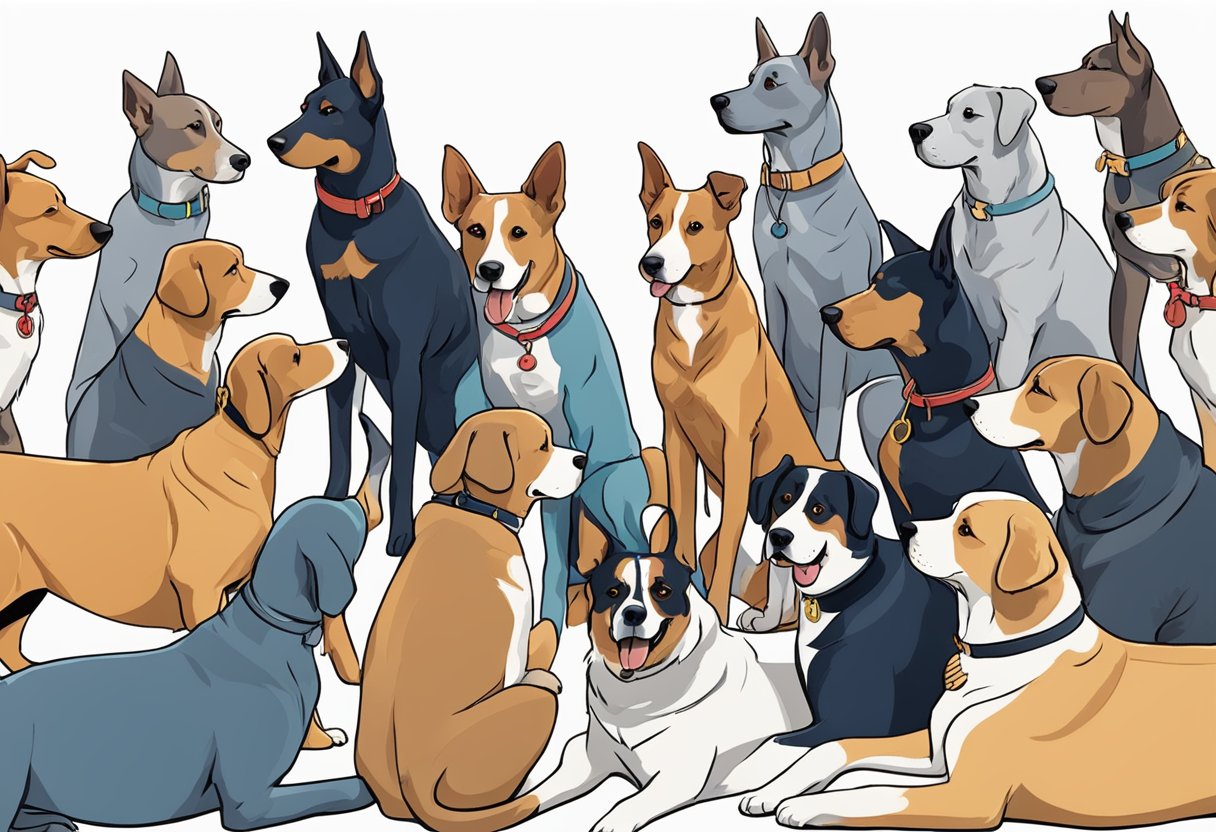The human body language speaks volumes to dogs, whose survival largely depends on reading social cues from both humans and other animals. Owners might notice their dogs reacting negatively when presented with the middle finger, a reaction that often leaves them puzzled or amused.
The reason dogs may react poorly to the middle finger can be tied to their ability to pick up on the nuances of human gestures and the underlying emotions or intentions they signal. The middle finger gesture, widely recognized as a sign of disrespect or anger among humans, does not carry the same meaning for dogs, but the accompanying body language or tone might convey negative or threatening emotions that dogs are sensitive to.
Dogs do not inherently understand the cultural significance of the middle finger as humans do. However, their acute sensitivity to human actions suggests they may associate this gesture with negative experiences or an adversarial stance. Moreover, since dogs have evolved to live closely with humans, reading our emotional states and body language has become crucial for them. A pointed finger, especially if accompanied by stern looks or a harsh tone, could be interpreted by a dog as a scolding or threatening gesture. As a result, a dog’s reaction to the middle finger often has less to do with the gesture itself and more with how they’ve experienced it in the context of past interactions with humans.
Key Takeaways
- Dogs respond to human gestures based on the emotions and intentions they perceive.
- Although the middle finger holds no intrinsic meaning to dogs, associated negative signals can affect their behavior.
- A dog’s reaction to the middle finger is influenced by their socialization and past experiences with their owner.
Canine Perception of Human Gestures
Dogs are deeply attuned to human body language, which forms the crux of their ability to interact and communicate with their human companions. Understanding dogs’ reactions to specific gestures can enhance the bond between humans and their canine friends.
Understanding Dog Behavior
Dogs primarily rely on body language to communicate, and they react instinctively to the body language of humans. They are adept at reading human gestures, such as pointing or waving, which are forms of non-verbal communication. Studies have shown that dogs can interpret human gestures to find hidden food or follow commands, affirming that canine perception is aligned with their ability to understand human cues.
The Meaning Behind Human Gestures
Communication:
Humans convey a multitude of messages through gestures, which dogs can learn to recognize. For instance, an outstretched arm might signal an invitation to play, while a raised palm could mean ‘stop.’ Research suggests dogs can categorize certain human facial expressions and respond accordingly, highlighting their nuanced perception of human gestures.
- Pointing: Dogs are known to respond more reliably to pointing as compared to other visual cues like glancing or gazing.
- Facial Expressions: Evidence indicates that dogs can discern basic human emotions from facial expressions.
Dogs’ Interpretation of the Middle Finger
Body Language:
While the middle finger does not have a specific meaning in canine language, dogs may react to it if it is presented in a way that resembles a typical human gesture with which they are familiar. It’s possible that a dog might perceive the middle finger as a pointing action or may become confused by its ambiguity as a gesture. However, there is no inherent reason why a dog would specifically dislike the middle finger, as its connotative meaning is strictly a human construct.
The Middle Finger as a Threatening Signal

Dogs may interpret the middle finger as a sign of aggression due to its use as a disrespectful gesture by humans. Recognizing the potential for negative emotions associated with this signal is crucial for understanding a dog’s response.
Why Dogs May See It as Aggressive
Canines are adept at reading human body language and may associate the middle finger extension with aggressive intentions, as it is often perceived by humans. They may interpret this signal as a direct threat, prompting a defensive response.
Body Signals and Aggressive Postures
Dogs are sensitive to body signals, and a person’s posture when displaying the middle finger might mimic that of a threat. For instance, a raised arm and an extended finger can resemble the stance of an aggressor, potentially triggering the dog’s instinctual reaction to perceived aggression.
The Role of Negative Energy and Emotions
The middle finger is universally recognized as a sign of disrespect and negative energy. This negativity can be sensed by dogs, as they are often attuned to their owner’s emotions. When a person shows the middle finger with negative energy, a dog may become uneasy or anxious, sensing the hostile environment.
Canine Emotional Responses

Dogs exhibit a complex range of emotions, reacting to their environment and human interactions with varying degrees of fear, comfort, anger, and curiosity. Their responses can elucidate much about their feelings towards certain stimuli, including seemingly innocuous actions like the human use of the middle finger.
Fear and Anxiety in Dogs
Dogs experience fear and anxiety in situations they perceive as threatening or unfamiliar. Fear is a natural emotion that may manifest as submissive behavior, avoidance, or even aggression if they feel cornered. Anxiety often develops from prolonged exposure to stressors, resulting in nervous behaviors such as excessive barking, restlessness, and destructive actions.
- Signs of fear: Trembling, tail-tucking, whimpering.
- Signs of anxiety: Persistent pacing, vocalization, compulsive licking.
Anger and Aversion Reactions
While anger in dogs is not as complex as in humans, they can exhibit aversion or defensive aggression when provoked or faced with a perceived threat. Such emotions drive dogs to react negatively toward certain gestures that they may associate with bad experiences or intimidation.
- Displays of aversion: Growling, baring teeth.
- Anger-related behaviors: Snapping, lunging forward.
Curiosity Versus Wary Behavior
A dog’s curiosity may be piqued by new experiences, leading to explorative behaviors as they seek to understand their surroundings. However, when curiosity is replaced by wary suspicion, especially of specific gestures or body language, they may retreat or react defensively.
- Curiosity-driven actions: Sniffing, approaching with interest.
- Wary responses: Withdrawal, guarded stances.
Each of these emotional responses can shape a dog’s reaction to certain stimuli, including negative human gestures like the middle finger, which might be perceived as threatening due to its association with human anger or disapproval. Understanding these emotional responses is key to fostering a safe and comfortable environment for canines.
Dog Owner Interactions and Training

In the context of dog training, owner interactions play a pivotal role in shaping a dog’s behavior and response to various stimuli, including potentially confusing gestures like the middle finger. An understanding of positive reinforcement and respectful boundaries is fundamental.
Positive Reinforcement Methods
Positive reinforcement is a cornerstone of effective dog training. Owners should reward desired behaviors with treats, praise, or play to reinforce these actions. This is preferred over disciplinary methods, which can create fear or aggression. Examples of positive reinforcement include providing a treat for sitting on command or verbal praise for calm behavior.
Managing Aggressive Behavior
Should a dog display aggression in response to the middle finger or any stimulus, owners are advised to consult with training experts for guidance. Understanding the underlying cause is crucial—whether it’s fear, dominance issues, or a lack of proper socialization. Techniques might involve redirecting the dog’s attention away from the stimulus or creating a positive association with it.
Respect and Boundaries in Training
Training should be based on respect and clearly defined boundaries. An environment of mutual respect between the owner and the dog aids in preventing confusion and misunderstandings. For instance, consistent commands and calm demeanor help dogs understand and respect the boundaries set by their owners, which is more productive than trying to assert dominance or control through forceful means.
Specific Canine Behaviors and Reactions

Understanding canine behaviors and reactions, especially as they pertain to the display of certain gestures like the middle finger, requires knowledge of their instincts and communication methods. Dogs use a variety of signals to convey discomfort or defensive attitudes stemming from growling and barking to more subtle ear and tail movements which reflect their emotional state.
Growling, Barking, and Protective Actions
When dogs feel threatened or protective, growling and barking are their primary vocal defense mechanisms. A raised middle finger, even if not inherently meaningful to a dog, may be perceived as a strange and potentially threatening gesture. This may trigger a dog’s protective instinct, especially if associated with negative experiences from the past, resulting in vocal warnings like growling or barking.
Natural Instincts and Defensive Responses
Dogs have strong natural instincts that inform their defensive responses. Unfamiliar gestures can be intimidating, causing a dog to react defensively. For example, abruptly pointing a middle finger could be misinterpreted as a sign of aggression, prompting a dog to respond with instinctual defensive behaviors ranging from retreating to showing signs of aggression as warnings.
Tail and Ear Signals
Tail and ear positions are critical in understanding a dog’s reaction. A tucked tail or pinned back ears can signal fear or submission, while a stiff, upright tail might indicate aggressive behavior. If a dog perceives the middle finger as a threat, these signals can change rapidly, communicating the animal’s discomfort or readiness to engage in protective actions.
Understanding Canine Domestication and Socialization

The interplay between domestication and socialization has crucially shaped dogs’ ability to interpret human gestures, regulate their emotions, and engage in complex social interactions.
The Evolution of Dog-Human Relationships
Historically, dogs evolved from wolves and became domesticated companions due to their ability to understand and adapt to human social cues. This process fostered a unique bond, allowing dogs to see us as family and often as parental figures, enhancing their ability to coexist harmoniously with humans. During domestication, selective breeding amplified traits like curiosity and reduced traits that humans may find intimidating or agitating, such as a strong adverse reaction to being touched on top of the head. Modern dogs generally do not hold negative associations with such contact, contrary to outdated beliefs that one should never pet a dog on the head.
Social Dynamics and Pack Behavior
Dogs are social animals with instincts rooted in pack behavior. They rely on a hierarchy where clear communication and discipline are key. Positive reinforcement with treats, coupled with consistent training, reinforces desired behaviors without causing the dog to become mad or scared. Negative interactions, however, can lead to a breakdown in trust, making a dog feel agitated or dislike certain actions, such as an aggressive hand gesture akin to a raised middle finger. Understanding these dynamics is essential for maintaining a healthy and balanced relationship with a canine companion.
The Importance of Clear Communication
Dogs thrive on clarity and consistency in interactions with their human family members, interpreting gestures and voice tones to discern mood and intent. They can detect excitement or agitation in humans and respond accordingly. When a dog does not understand a specific gesture, such as the middle finger, they might perceive it as a threat due to its unusual nature, thereby becoming scared or agitated. The key to a positive dog-human relationship lies in consistent and positive communication that does not elicit confusion or fear in the dog.
Frequently Asked Questions

In this section, several common inquiries about dogs’ reactions to human gestures, particularly the middle finger, are addressed. These questions explore the nuances of canine behavior and cross-species communication.
Can dogs understand the significance of human gestures?
Dogs may not grasp the complex cultural meanings of human gestures, but they can recognize them as cues or commands based on their training and experiences with their owners.
What are common reasons dogs may react negatively to certain actions?
Dogs could react negatively to actions they associate with threat or punishment. If a gesture like the middle finger has been used in a negative context, they might respond with discomfort or anxiety.
Is there a specific reason dogs might react to pointing gestures?
Pointing gestures, including the use of the middle finger, could be perceived by dogs as a more intense form of pointing. Since pointing can serve as a directive for dogs, a raised middle finger might be confusing or alarming to them.
How do dogs interpret non-verbal communication from humans?
Dogs are adept at interpreting a range of non-verbal cues from humans, such as body language, facial expressions, and tone of voice. They often use these cues to gauge their owner’s mood or intent.
What causes dogs to have antagonistic behaviors towards strangers, like mail carriers?
Dogs might display antagonistic behaviors towards strangers, like mail carriers, due to their natural instinct to protect their territory or pack from perceived threats or intruders.
How do interspecies communication differences impact dog-human interactions?
Differences in communication between species can lead to misunderstandings. Dogs rely heavily on non-verbal signals, and when human gestures do not align with their understanding, it can create confusion or stress in dogs.
